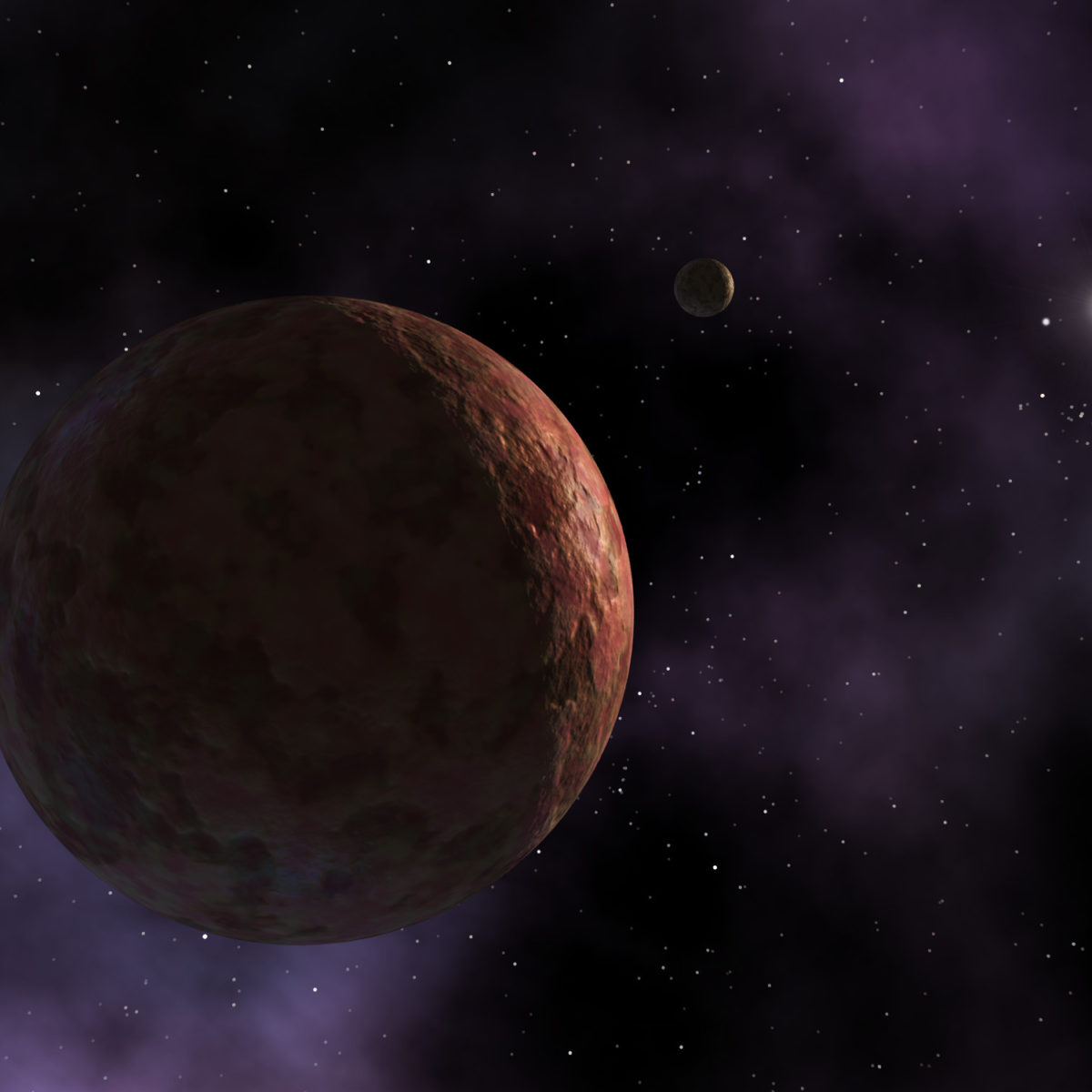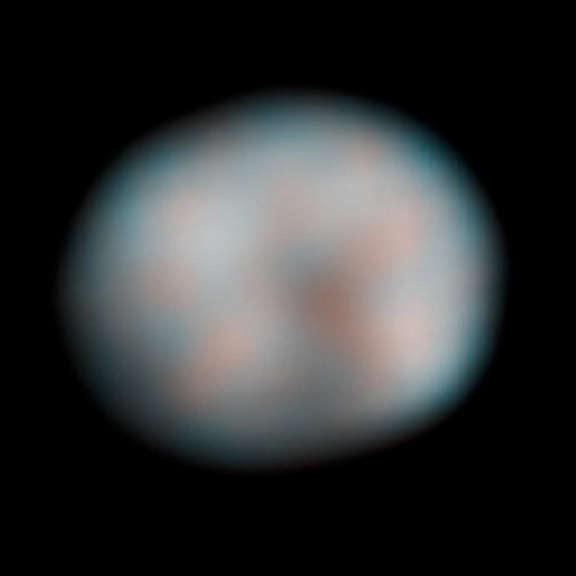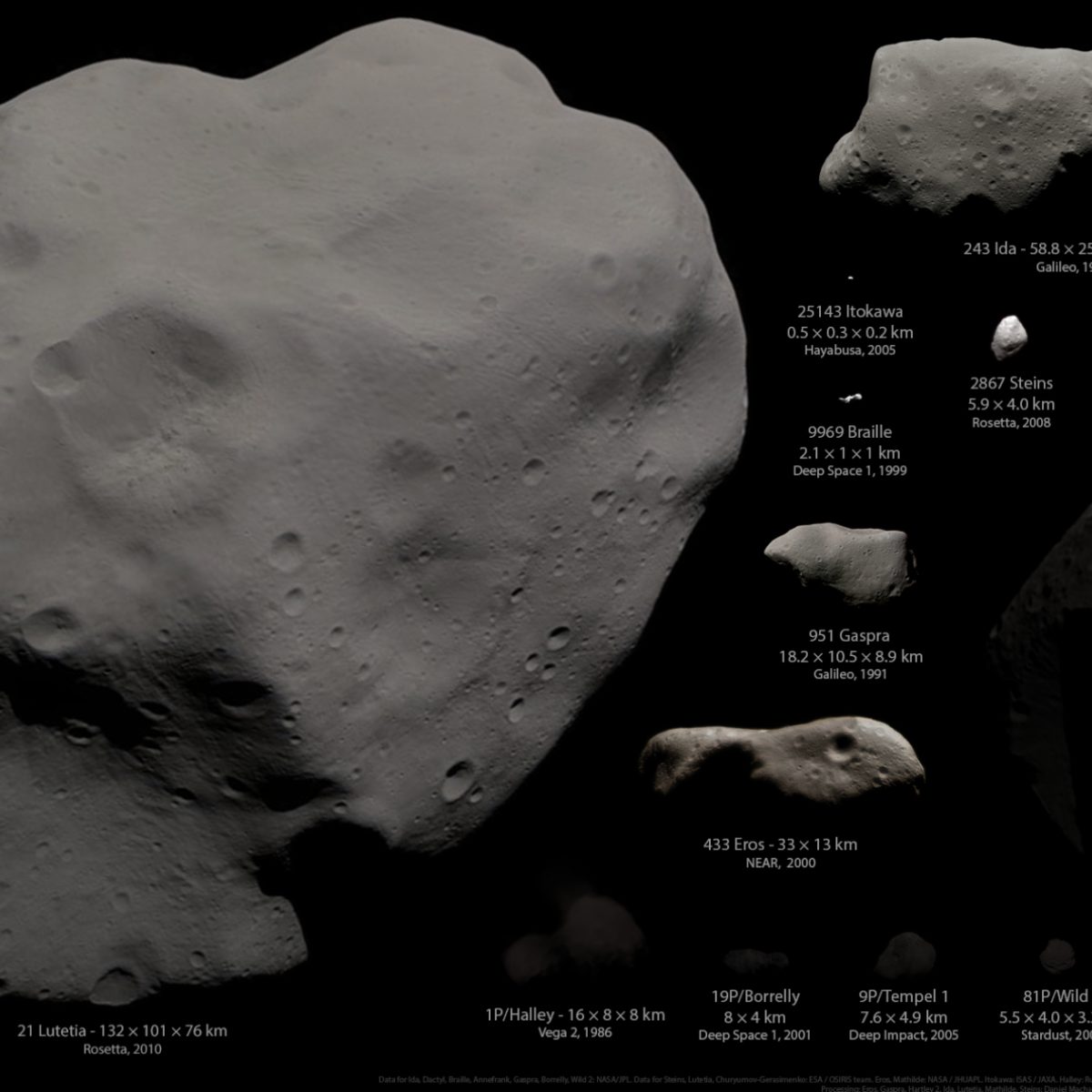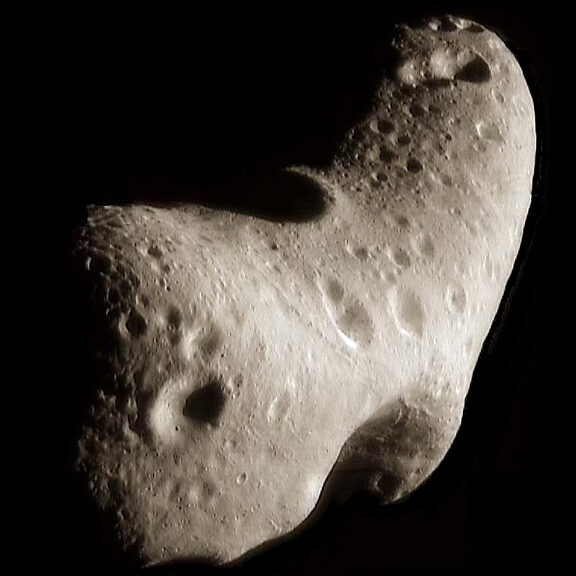All
All
Stories, updates, insights, and original analysis from The Planetary Society.
2010 JL33: How to see an asteroid from quite a long way away
A terrific set of Goldstone radar images of a good-sized near-Earth asteroids named 2010 JL33 was posted to the JPL website yesterday. They also posted a movie version but something about these pixelated radar image series absolutely begs for them to be displayed as an old-school animated GIF, so I made one.
365 Days of Astronomy Podcast: Unmanned Space Exploration in 2011
Today the 365 Days of Astronomy podcast aired my contribution, Unmanned Space Exploration in 2011, about what to look forward to in solar system exploration this year.
Orcus and Vanth
As part of a big, ongoing project to make a comparison chart of the dimensions and physical properties of solar system objects I've spent the morning tackling the difficult problem of summarizing the physical characteristics of the biggest things that are out there beyond Neptune.
Stardust mission update: 38 days to Tempel 1
Stardust is healthy after performing a
Happy 2011, and an end to the 2010 advent calendar
Welcome 2011! I can't wait for what this year has in store. The prize for all of you who have enjoyed opening each door in the Planetary Society's 2010 advent calendar is one of the best views we can get of one of the biggest objects in the asteroid belt, Vesta.
Door 31 in the 2010 advent calendar
Time to open the thirty-first (and next-to-last) door in the advent calendar. Where in the solar system are these dark-rimmed craters?
SOHO's 2000th comet
SOHO was launched more than 15 years ago to study the Sun, primarily; but a side benefit of its constant observation of the Sun has been its ability to notice
365 Days of Astronomy Podcast: Small Worlds
Today the 365 Days of Astronomy podcast aired my contribution, Small Worlds, about the smaller denizens of the solar system visited in the past year, and due to be visited in the next.
Door 27 in the 2010 advent calendar
Time to open the twenty-seventh door in the advent calendar. Where in the solar system is this flat-floored depression?
Door 15 in the 2010 advent calendar
Time to open the fifteenth door in the advent calendar. Where in the solar system is this cratered world?
Door 13 in the 2010 advent calendar
Time to open the thirteenth door in the advent calendar. Where in the solar system are these parallel gouges?
Boulders and Ponds on 433 Eros
There is really cool geology being explored on large, oddly shaped asteroids. The Near Earth Asteroid Rendezvous (NEAR) mission reached 433 Eros in 2000, and one of the exciting results was the discovery of features called
Asteroids and comets to scale, including Hartley 2
Just in time for today's Deep Impact press briefing, which you can watch on NASA TV in a few minutes: I've updated my montage of all the asteroids and comets that have been visited and photographed to include Hartley 2.
Deep Impact at Hartley 2: Two weeks after the flyby
Today the Deep Impact/EPOXI science team held a press briefing that followed up on their very successful flyby of two weeks ago, a status report on what they can say so far about the science that's coming out of the encounter.
A little more information on the Hayabusa samples from Itokawa
Since I posted an update Monday about JAXA confirming extraterrestrial samples in the Hayabusa sample return capsule, JAXA has posted an English-language version of their press release, which contains a bit more information.
365 Days of Astronomy Podcast: What's in a Science Meeting?
Today the 365 Days of Astronomy podcast aired my contribution, What's in a Science Meeting?, about what scientists do at big meetings like the Division of Planetary Sciences.
JAXA announcement: Itokawa sample return successful!
It's official: in a press release today, JAXA announced that some 1,500 dust grains scraped from the interior of Hayabusa's clean-looking sample return capsule are not of terrestrial origin so must be from Itokawa.
DPS 2010: Centaurs and Trans-Neptunian objects
I attended all day Tuesday of the Division of Planetary Sciences meeting on October 5. The afternoon session on Tuesday was a grab bag about different small objects in the outermost solar system.
In which I finally write up last week's Deep Impact Hartley 2 press briefing
On Thursday, November 4, at 13:50 UTC, Deep Impact flew within 700 kilometers of comet Hartley 2. Hartley 2 is the smallest and most active of the five comets that have been directly by a spacecraft, and the first to be visited within the lifetime of its discoverer.
Eris might be smaller than Pluto after all (but it's still more massive)
Several astronomers pointed their telescope at Eris to watch it pass in front of a background star. Occultations permit precise measurement of the diameters of distant, faint objects, and it turned out that Eris was much smaller than previously thought, so much so that its diameter may turn out to be the same as, or even smaller than, Pluto's.


 Explore Worlds
Explore Worlds Find Life
Find Life Defend Earth
Defend Earth


 Sun
Sun Mercury
Mercury Venus
Venus Earth
Earth Mars
Mars Jupiter
Jupiter Saturn
Saturn Uranus
Uranus Neptune
Neptune Small Bodies
Small Bodies

















